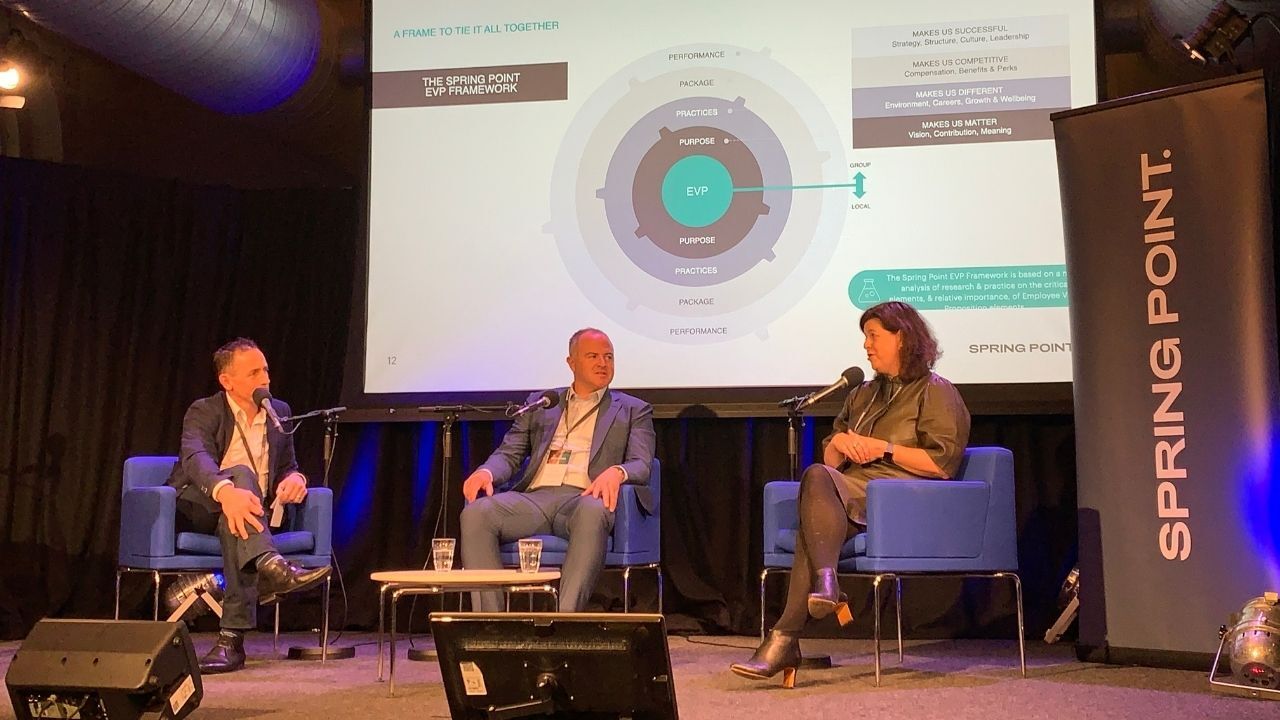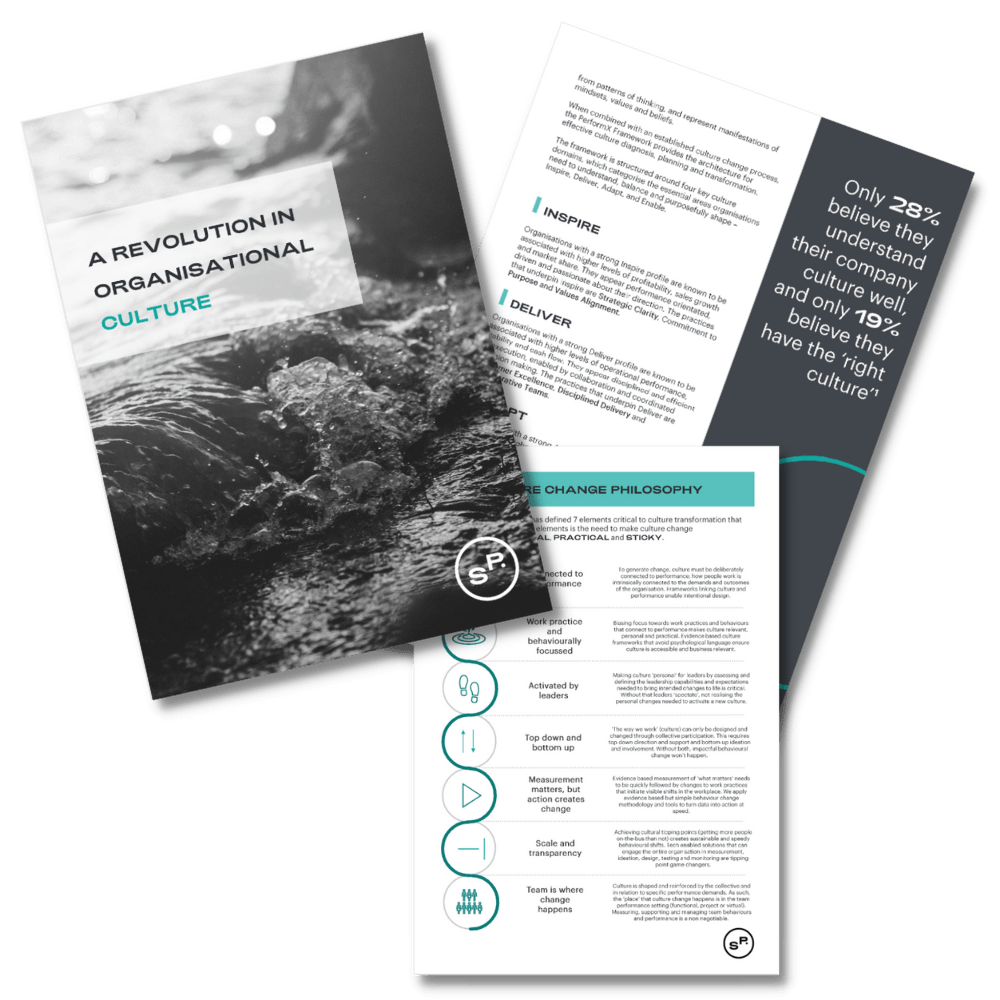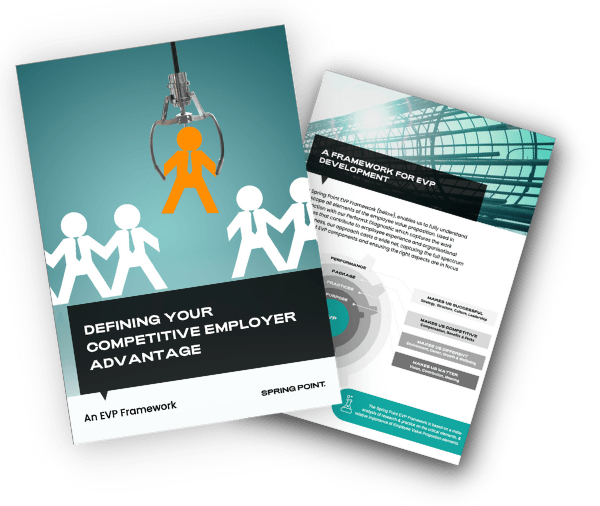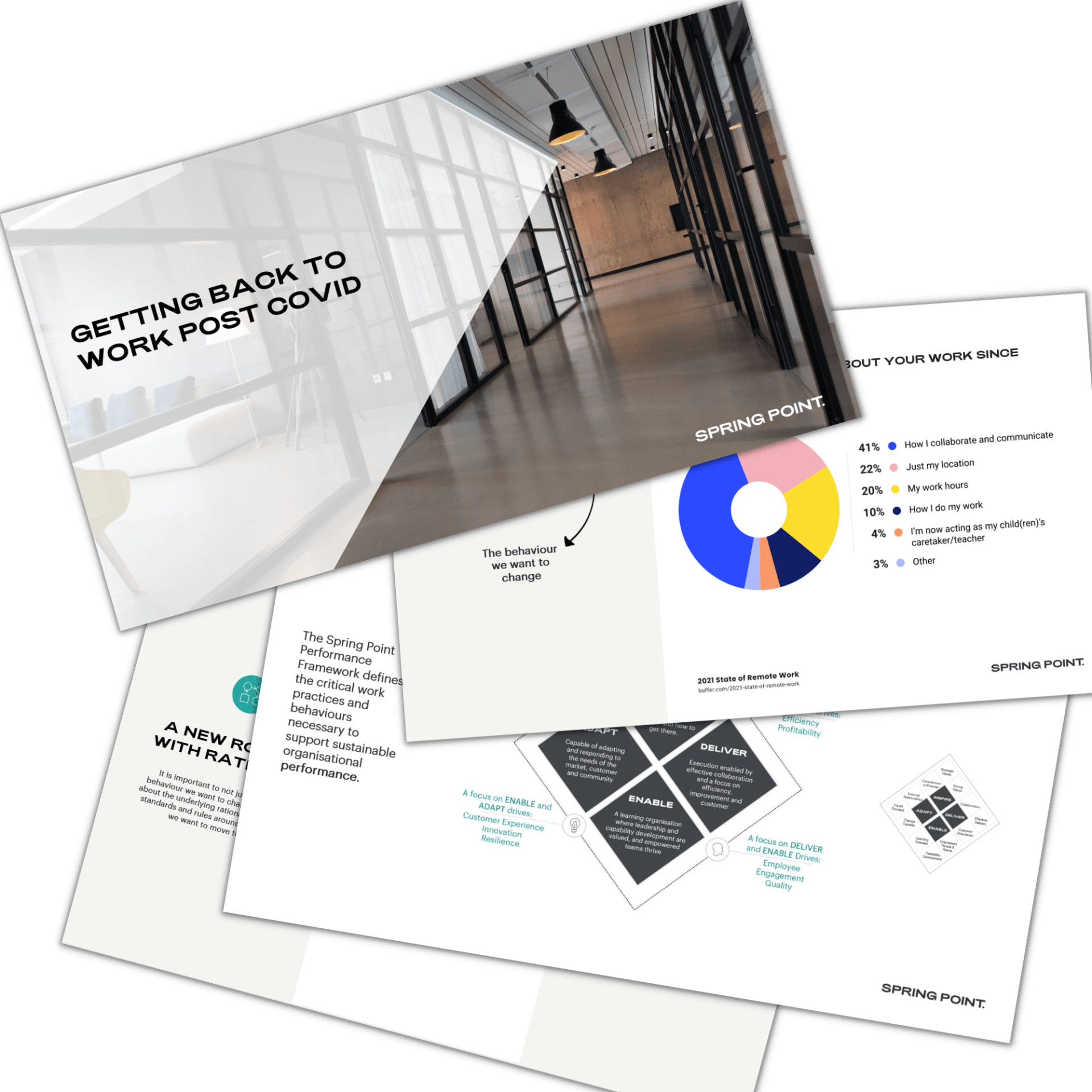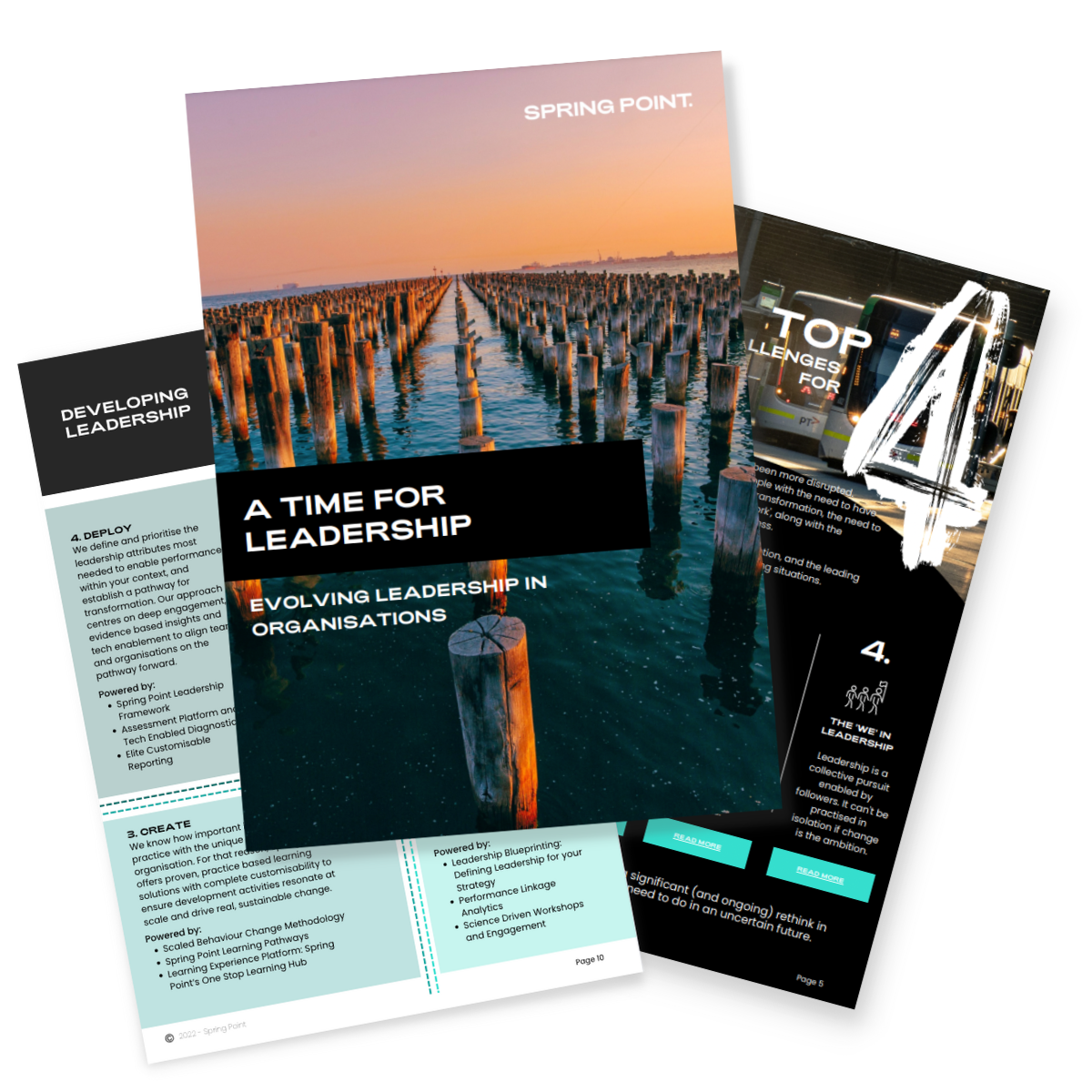INSIGHTS
INSIGHTS & EVENTS TO STIMULATE YOUR THINKING
As management and change consultants we are driven by research, and as a team we love to share our thinking and our insights to help improve the way we work, and live.
Check out our
latest articles,
previous
event
recordings and
latest thinking.
OUR LATEST THINKING
REVOLUTION IN ORGANISATIONAL CULTURE WHITE PAPER
What drives and sustsains organisational culture change? Why is culture more important than engagement, and how can you avoid derailing your culture change efforts?
EVP FRAMEWORK
Our EVP design framework provides for a broader scope of organisational performance conditions that we know are critical to the effectiveness of the work environment.
RETURN TO THE OFFICE PLAYBOOK
Our Return to the Office playbook provides some practical perspectives and a frame for considering hybrid working relative to organisational culture to help employers engage with, and encourage their employees back in to the office.
A TIME FOR LEADERSHIP WHITEPAPER
What can organisations do now to assess, define, plan and develop leaders for the future, and what capabilities are going to be most important in the next few years?


